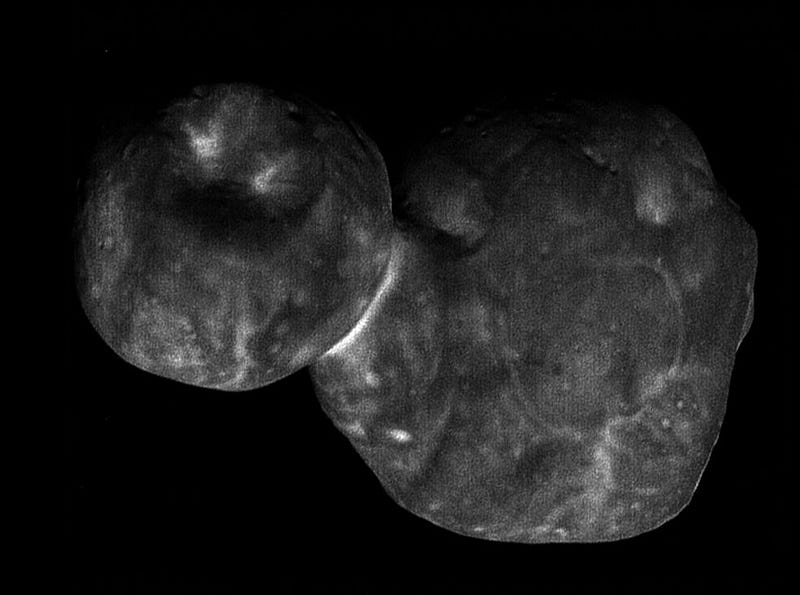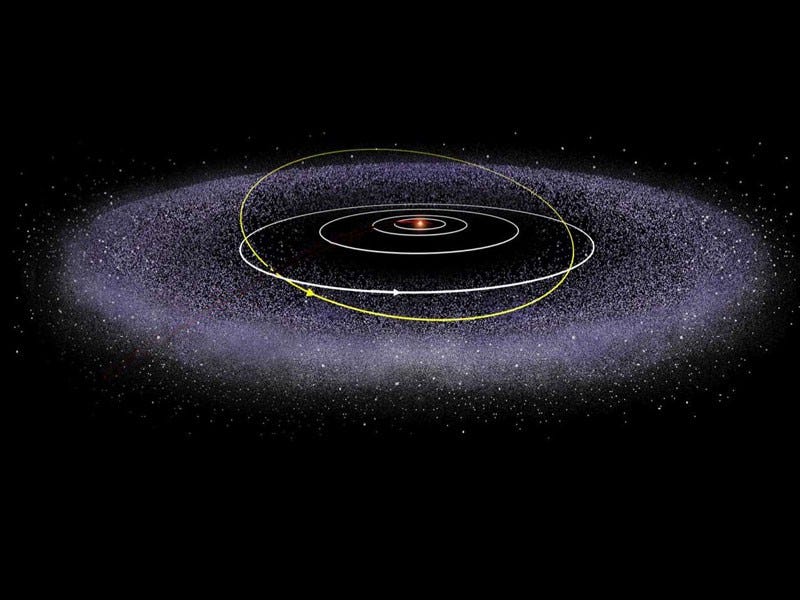New Insights from New Horizons: The MU69-Ultima Thule Encounter
Written on
Chapter 1: Introduction to MU69-Ultima Thule
The New Horizons mission has returned its first insights following the probe's encounter with MU69, commonly referred to as Ultima Thule. This celestial body is believed to be a primordial object that dates back to the early days of our solar system.

Main image: The clearest capture of MU69-Ultima Thule by the New Horizons probe (NASA).
On January 1, 2019, NASA's New Horizons spacecraft performed a flyby of MU69, a distant object located in the remote regions of the Solar System. Positioned 6.6 billion kilometers away from Earth, this encounter marks the farthest object closely studied by any space agency to date.
Now, just under six months after this momentous event, Alan Stern and his team have unveiled the initial findings from the probe's exploration. Their data indicates that MU69, a 35-kilometer-wide relic situated 6.6 billion kilometers from our planet, has remained largely undisturbed since its formation approximately 4.5 billion years ago, even evading significant solar heating.
The New Horizons spacecraft, which previously skimmed past Pluto in 2015, is continuing its journey into the Kuiper Belt—a region beyond Neptune filled with small, icy celestial bodies.

Chapter 2: The Kuiper Belt and Its Significance
The Kuiper Belt, where MU69 resides, consists of icy bodies known as Kuiper Belt Objects (KBOs) or trans-Neptunian objects (TNOs). These entities are generally considered remnants from the early solar system's history.
Ultima Thule is classified as a ‘Cold Classical Kuiper Belt Object,’ a category that includes celestial bodies believed to have remained largely unaffected since the solar system's inception due to their stable orbits and minimal solar heating. Consequently, unaltered objects like MU69 hold essential clues regarding the early solar system.
The authors present results derived from the New Horizons data transmitted back to Earth shortly after the flyby. Their analysis reveals that MU69 possesses a flattened bi-lobate shape, likely the result of a gentle collision between two smaller celestial bodies.
While distinct geological features were observed on its surface, there was little variation in color or composition. No moons, rings, or dust clouds were detected orbiting MU69, and no signs of an atmosphere were found.
According to Stern and his colleagues, these preliminary insights stem from merely about 10% of the total data collected during the flyby; the complete data transmission from the spacecraft to Earth is anticipated to conclude by 2020.
This first video features a live press conference where officials discuss the New Horizons probe's flyby of Ultima Thule and present initial findings.
In this second video, Alan Stern provides an in-depth look at New Horizons' flyby of Ultima Thule, offering insights into its significance and the mission’s objectives.